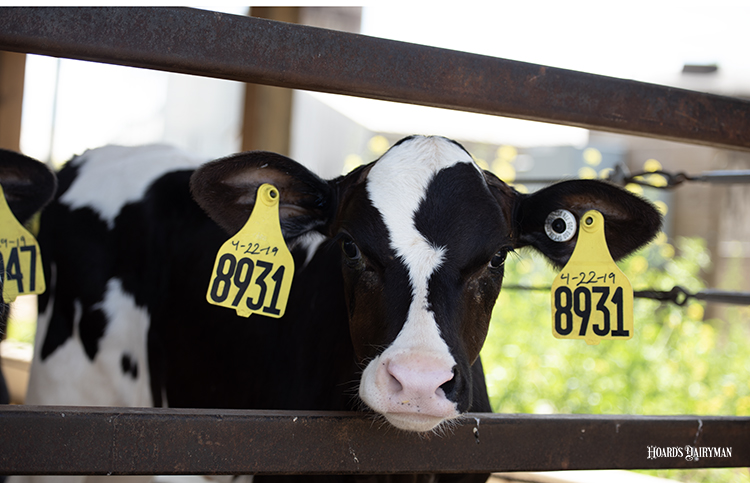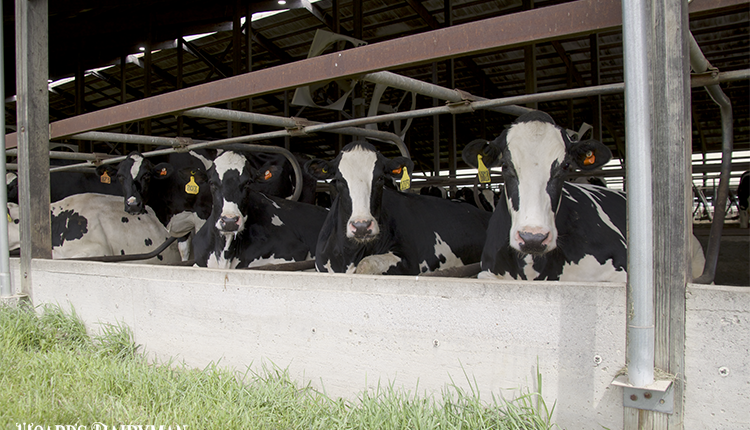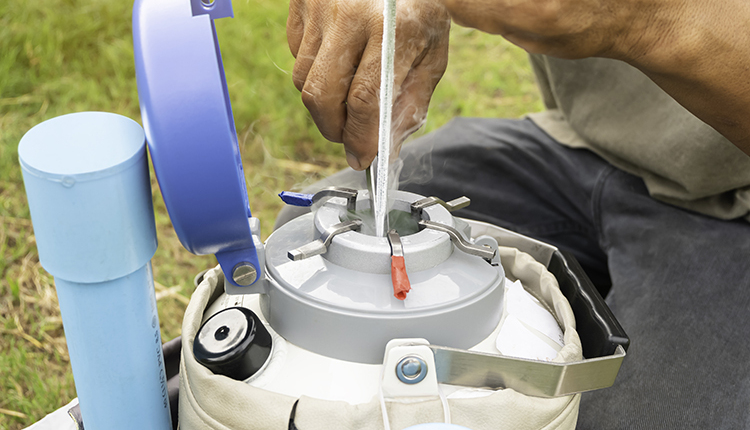
New genetic evaluations will be published Tuesday, April 4, for dairy producers to make breeding, culling, and other management decisions with updated predictions of animals’ genetic merit. Nearly 80 million dairy animals will receive updated evaluations, or “proofs,” for 50 individual traits and four selection indexes.
Our U.S. dairy evaluation system is quite unique compared to other livestock species. Around the world, the U.S. is revered as the premier system, a pioneer and innovator in genetics.
What’s the (not-so-secret) secret to that reputation?
The U.S. genetic system is a collaboration between dairy producers and several organizations that serve those producers. Not-for-profit organizations with a high level of farmer involvement are responsible for managing animal identification data, editing and aggregating data, and calculating U.S. genetic evaluations.
Our dairy community is experienced and advanced when measuring and tracking large amounts of animal data, dating back to the start of milk recording back in 1895 by the U.S. Department of Agriculture (USDA). The unique private-public collaboration with USDA has provided leading genetic research and farm-focused solutions for more than a century.
Dairy producers drive our services
CDCB and our partners are driven to add value for dairies and to help producers maximize the genetic merit of their animals. “Dairy-driven” is CDCB’s leading organizational value. One way we live that value is through intentional grassroots input – advice and questions from the producers who use the genetic evaluations.
The CDCB board of directors guides our strategy and priorities. Three of the 12 individuals on CDCB’s board are producers that represent a breed association, dairy records provider, or dairy records processing center. Producers currently on the CDCB Board are Jonathan Lamb, Oakfield Corners Dairy in New York; Mark Rodgers, MKVT Polled Holsteins in Vermont; and Dan Sheldon, from Woody Hill Farm in New York.
To help ensure our services and evaluations remain relevant for today’s dairy farms, CDCB founded a producer advisory committee (PAC) in 2019. In just a few short years, 10 different producers have been involved. The six dairy producers currently serving on the PAC hail from East Coast to West Coast:
- William “Bill” Peck, Welcome Stock Farm, New York
- Kent Buttars, Butter Dell Dairy, Utah
- Spencer Hackett, Melarry Farms, Minnesota
- Lloyd Holterman, Rosy-Lane Holsteins, Wisconsin
- Tom Kestell, Ever-Green-View-Farm, Wisconsin
- Sean Tollenaar, Tollcrest Dairy, California
I recently asked Bill Peck, the PAC chair, why he makes time to serve on this committee. “It is very important for CDCB to understand and get a sense from producers, those that are out every day in the barn, milking the cows, as far as to what genetic changes or benefits we are seeing and what direction we need to go in,” he responded. “We work as a team of dairymen from different parts of the country, so we get to hear different perspectives.”
Mark Rodgers, a producer from Vermont, echoed Peck’s sentiment, “Being a farmer representative on the CDCB board allows me to explain the practical application – both how we get data into programs and how we use the data on farm – to advance genetic improvement and the dairy industry.”
The need for independent evaluations
Each time our producer advisory committee meets, they bring up the importance of independent, third-party genetic evaluations. These impartial evaluations are the foundation for genetic programs and products from breed associations, artificial insemination companies, and dairy records providers.
“As producers, it’s important to know that CDCB evaluations are the gold standard,” added Peck. “These are non-partisan, non-interested parties that are taking this data, doing the research, and trying to better all dairy breeds. The most important thing is that we have an unbiased view, an arbitrator per se, to help us go in the right direction. We need CDCB bringing all this information in and putting it together in an unbiased form for we as producers to use.”
What’s next on the genetic horizon?
Our producer advisers and CDCB’s board directs our priorities for research and development of new traits. CDCB’s current research is focused in five areas.
- Mobility and hoof health traits: Genetic selection for better hoof health is one opportunity to reduce lameness, which affects about 50% of dairy cows. To identify and measure a genetic trait, a data pipeline is necessary to capture hoof health observations (phenotypes) and genotypes, and we are working with hoof trimmers, veterinarians, and producers to collect this data from different systems into one pipeline.
- Milking speed: Producers actively use milking speed metrics to guide management and economic decisions. Our long-term goal is to provide accurate, low-cost genomic evaluations for milking speed that can be predicted at birth, and to measure milking speed through quantitative data collected in all breeds through modern milking systems.
- Resistance to Johne’s disease: We are exploring genetic selection to help reduce the incidence of Johne’s disease, with the goal of adding a Johne’s resistance trait to the six CDCB health traits currently available.
- Boosting feed efficiency data: The Feed Saved trait debuted in December 2020 to measure and document variance in cows’ ability to convert feed to milk so we can breed more feed-efficient cows, save on feed costs, and reduce dairy’s environmental footprint.
- Mitigating methane emissions: Customers and policymakers expect the dairy industry to minimize enteric methane emissions, and genetics certainly plays a role. Through collection of methane emission data on a robust number of genotyped cows, we can develop national genomic evaluations for methane emissions and breed for lower emitting cows.
Meanwhile, watch for the new April 4 genetic evaluations at www.uscdcb.com and in reports by Hoard’s Dairyman and industry organizations.








